I first discovered ngohiong during a vacation in Cebu from street-side stalls near University of San Carlos. After tasting these crispy rolls with their sauce and puso (hanging rice), I knew I had to learn how to make them at home.
While it might seem hard at first, I promise that with a bit of patience and the right technique, you'll master this crunchy lumpia just like from Doming's Ngohiong. This recipe brings me back to my vacation in Cebu, and I'm excited to share my version with you. Let's do it!
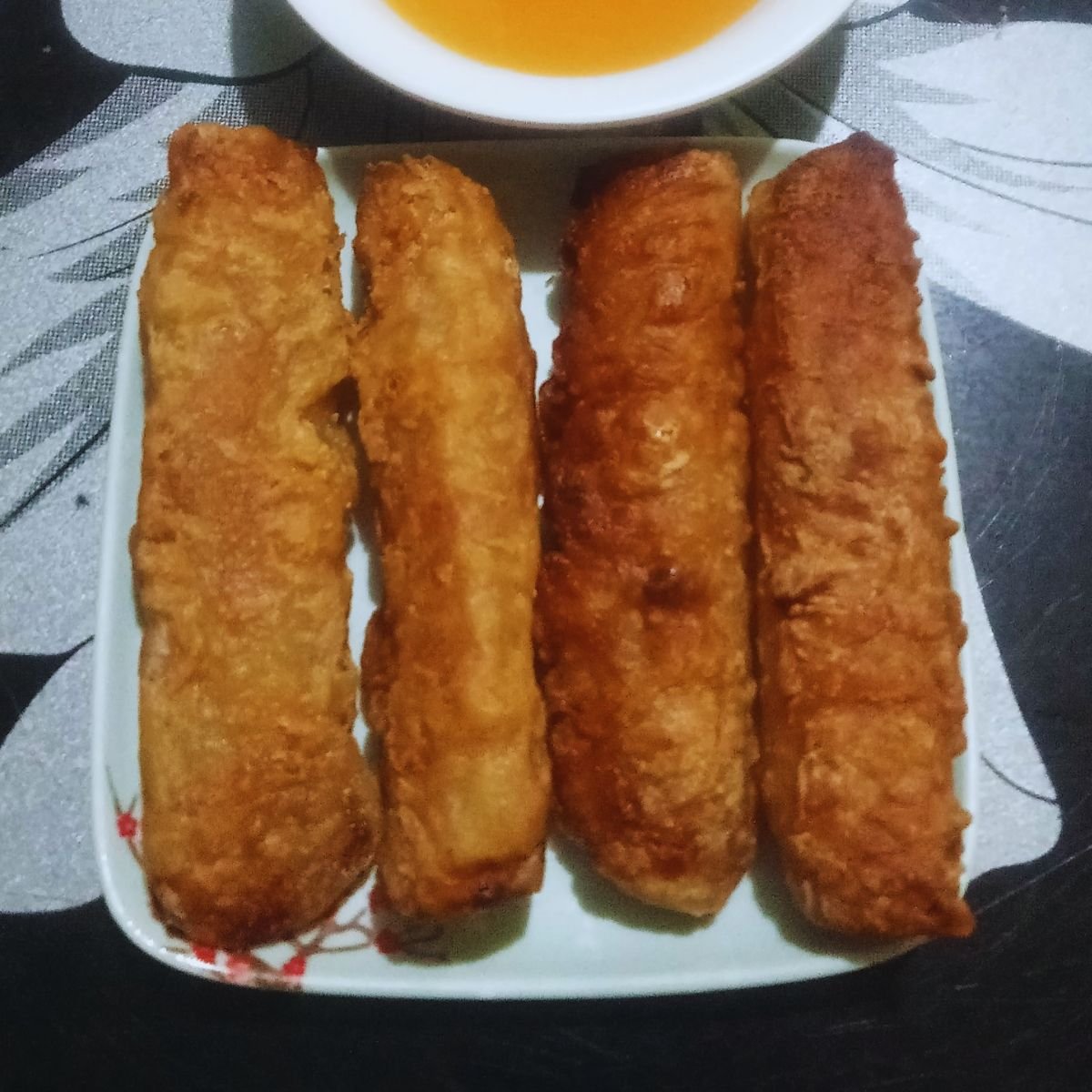
My Ingredients
For the Filling:
- 3-4 cups ubod (heart of palm), julienned
- 1 medium singkamas (jicama), julienned
- 1 lb (450g) ground pork
- 5 cloves garlic, crushed and minced
- 1 medium onion, minced
- 1 bundle green onion, chopped
- 3 tablespoons ngohiong powder (Chinese five-spice powder)
- Cooking oil
- Salt and pepper to taste
For the Batter:
- 2 cups cornstarch (corn flour)
- 1½ cups water
- 3 teaspoons paprika
- 1 teaspoon white pepper powder
- 1 package lumpia wrappers (20-24 pieces)
For the Signature Sauce:
- 2 tablespoons soy sauce
- 2 tablespoons brown sugar
- ¼ teaspoon five-spice powder
- 5 tablespoons water
- ½ teaspoon corn flour
- 1 egg white, lightly beaten

How I Make My Ngohiong
- First, I prepare my ingredients. I julienne the heart of palm (ubod) and jicama (singkamas) into thin strips. I mince the garlic and onion, and chop the green onions.
- I heat oil in a wok over medium heat. I saute minced garlic and onion. I add ground pork and cook for about 2 minutes. I pour in ¼ cup water, bring to a boil, then reduce heat and simmer for 10 minutes.
- I stir in the five-spice powder, julienned ubod, singkamas, and chopped green onions. I continue sauteing for 3 minutes. I season with salt and pepper to taste. I drain excess oil from the filling and let it cool completely.
- While waiting, I prepare the batter by combining cornstarch, water, paprika, and white pepper in a bowl. I whisk until completely smooth.
- For assembly, I place a lumpia wrapper diamond-style on a clean surface. I put 2 tablespoons of filling near the bottom corner. I fold the bottom corner over the filling, then fold both side corners toward the center. I roll tightly upward and seal the final edge with water.
- I heat fresh oil to 350°F for frying. I dip each prepared roll in the cornstarch batter. I fry the rolls in batches for 2 to 3 minutes per side until they turn golden brown. I remove and drain on paper towels.
- For my signature sauce, I combine soy sauce, brown sugar, five-spice powder, water, and corn flour in a small saucepan. I simmer over low heat for 2 minutes while stirring constantly. I slowly drizzle in the beaten egg white while continuing to stir. I remove from heat and let cool before serving.
- I serve hot and crispy with the prepared sauce. Enjoy your ngohiong!
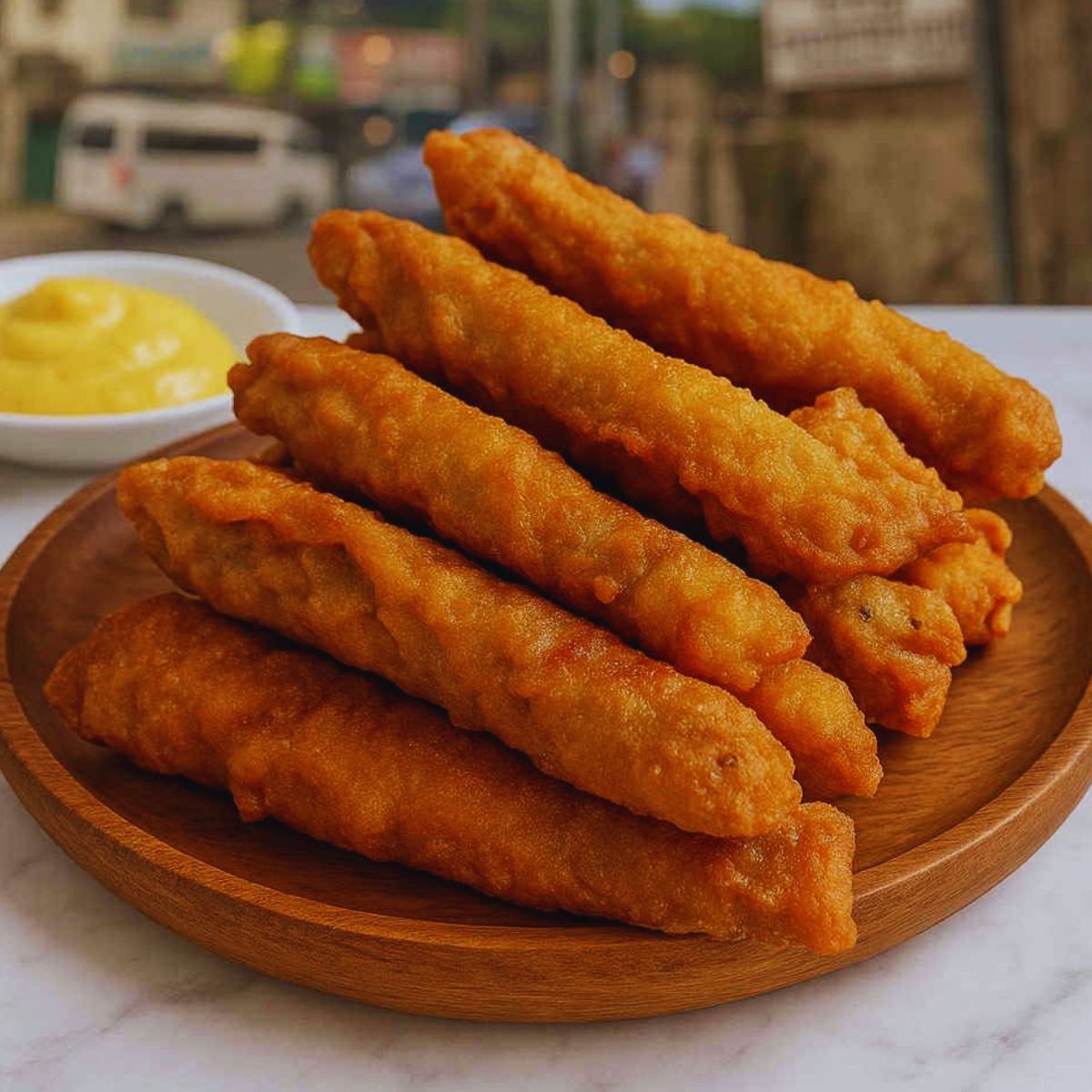
My Personal Tips
- I always use fresh lumpia wrappers because not frozen wrappers provide the best texture and are easier to work with.
- I drain my filling thoroughly because excess moisture will make wrappers tear and cause oil splatters when frying.
- I make the filling a day in advance to allow the five-spice flavor to fully penetrate the ingredients.
- I roll tightly because loose rolls will absorb more oil and potentially fall apart when frying. I work in small batches because overcrowding the pot lowers oil temperature and results in soggy ngohiong.
- If my wrappers are particularly thin or tear easily, I use two layers for extra durability.
- I judge doneness by color because perfect ngohiong should be golden brown, not pale (undercooked) or dark brown (overcooked).
- If my wrapper tears during rolling, my filling might be too wet, so I drain thoroughly before rolling. I also check if wrappers are too dry (cover with damp cloth) or if I'm overfilling.
- If my ngohiong bursts while frying, oil temperature might be too high, or rolls aren't sealed properly. I make sure all edges are securely closed.
- For storing, I can store unfried rolls in refrigerator for up to 2 days. I place in airtight container with parchment paper between layers to prevent sticking. For fried ngohiong, I store in airtight container in refrigerator for up to 2 days.
Related
Looking for other recipes like this? Try these:

My Cebuano Ngohiong (Cebu's Lumpia) Recipe
Cebuano ngohiong is a crispy spring roll filled with julienned heart of palm, jicama, and ground pork seasoned with Chinese five-spice powder, coated in cornstarch batter and deep-fried to golden perfection.
Ingredients
Method
- First, I prepare my ingredients. I julienne the heart of palm (ubod) and jicama (singkamas) into thin strips. I mince the garlic and onion, and chop the green onions.
- I heat oil in a wok over medium heat. I saute minced garlic and onion. I add ground pork and cook for about 2 minutes. I pour in ¼ cup water, bring to a boil, then reduce heat and simmer for 10 minutes.
- I stir in the five-spice powder, julienned ubod, singkamas, and chopped green onions. I continue sauteing for 3 minutes. I season with salt and pepper to taste. I drain excess oil from the filling and let it cool completely.
- While waiting, I prepare the batter by combining cornstarch, water, paprika, and white pepper in a bowl. I whisk until completely smooth.
- For assembly, I place a lumpia wrapper diamond-style on a clean surface. I put 2 tablespoons of filling near the bottom corner. I fold the bottom corner over the filling, then fold both side corners toward the center. I roll tightly upward and seal the final edge with water.
- I heat fresh oil to 350°F for frying. I dip each prepared roll in the cornstarch batter. I fry the rolls in batches for 2 to 3 minutes per side until they turn golden brown. I remove and drain on paper towels.
- For my signature sauce, I combine soy sauce, brown sugar, five-spice powder, water, and corn flour in a small saucepan. I simmer over low heat for 2 minutes while stirring constantly. I slowly drizzle in the beaten egg white while continuing to stir. I remove from heat and let cool before serving.
- I serve hot and crispy with the prepared sauce. Enjoy your ngohiong!
Notes
- I always use fresh lumpia wrappers because not frozen wrappers provide the best texture and are easier to work with.
- I drain my filling thoroughly because excess moisture will make wrappers tear and cause oil splatters when frying.
- I make the filling a day in advance to allow the five-spice flavor to fully penetrate the ingredients.
- I roll tightly because loose rolls will absorb more oil and potentially fall apart when frying. I work in small batches because overcrowding the pot lowers oil temperature and results in soggy ngohiong.
- If my wrappers are particularly thin or tear easily, I use two layers for extra durability.
- I judge doneness by color because perfect ngohiong should be golden brown, not pale (undercooked) or dark brown (overcooked).
- If my wrapper tears during rolling, my filling might be too wet, so I drain thoroughly before rolling. I also check if wrappers are too dry (cover with damp cloth) or if I'm overfilling.
- If my ngohiong bursts while frying, oil temperature might be too high, or rolls aren't sealed properly. I make sure all edges are securely closed.
- For storing, I can store unfried rolls in refrigerator for up to 2 days. I place in airtight container with parchment paper between layers to prevent sticking. For fried ngohiong, I store in airtight container in refrigerator for up to 2 days.
Tried this recipe?Let us know how it was!
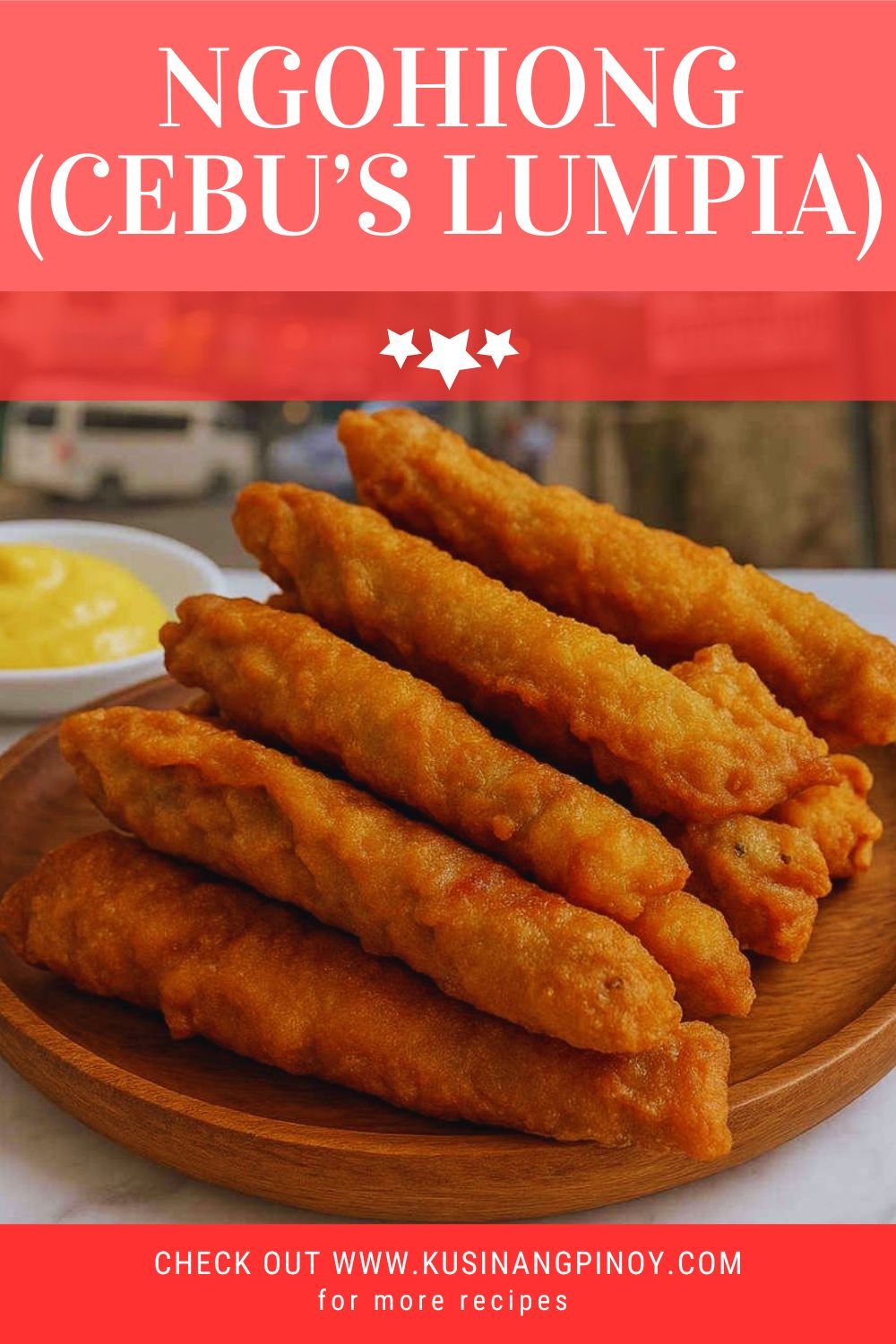

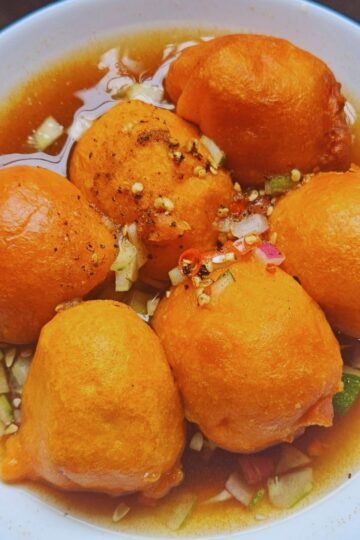
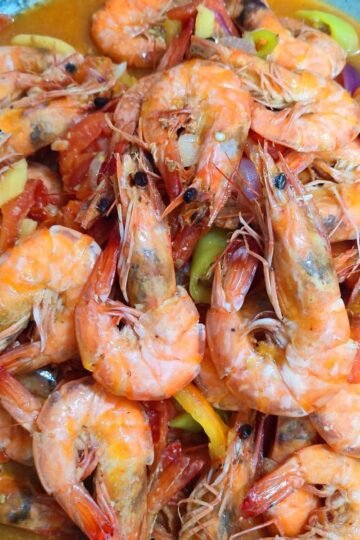
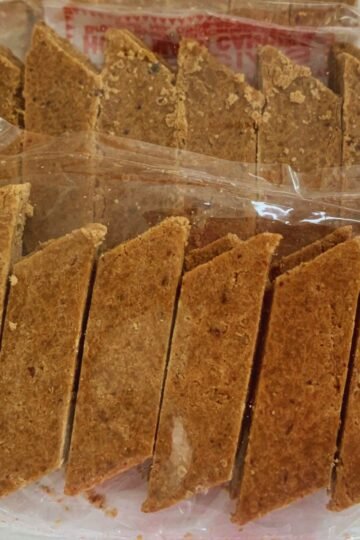

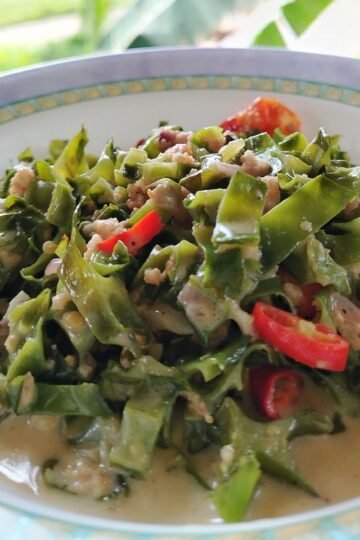
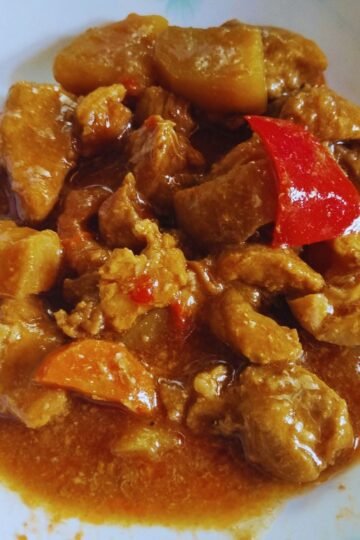


Comments
No Comments